The Burrough on the Hill Walk in pictures and words, part 1
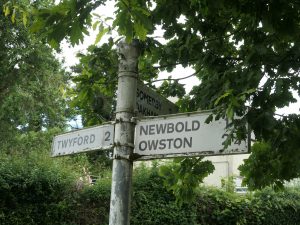
Pictures Johnathon Bridgland; text by Ivern Idea.
Burrough on the Hill was the site of an Iron Age hill which was built to protect the Midlands from the mauraduing devils that would venture from the south.
To the left is Twyford meaning Two Fords, and to the right is Newbold Owston meaning two Jaguars and a Landrover.
The village’s name means ‘fortification on the hill’ 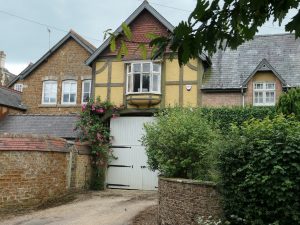 although not all scholars agree and some argue that the village name actually means “piles of earth dumped here” but this has been thought to be too rowdy a name for Leicestershire.
although not all scholars agree and some argue that the village name actually means “piles of earth dumped here” but this has been thought to be too rowdy a name for Leicestershire.
Either way, on 1 April 1936 the parish was abolished and merged with Somerby. However further confusion arose from the fact that the neighbouring village actually contains the John O’ Gaunt railway station taking villagers to 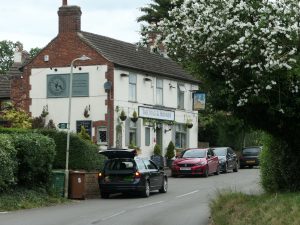 Market Harborough and other such venues.
Market Harborough and other such venues.
But the line was closed in the 1960s. There is a local bus service to Melton Mowbray every other leap year.
Public houses are common in the area and can be identified by their signage, many of which will seek to be identified with the famous local horse and Burrough Hill Lad of whom it also has been said.
Indeed in the 1980s 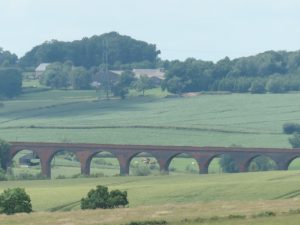 Burrough Hill Lad was considered one of the greatest racehorses in the history of the sport of history.
Burrough Hill Lad was considered one of the greatest racehorses in the history of the sport of history.
The area is als0 famous for its viaduct and for the numerous and regular sightings in the village of a panther which roams the area seeking out young sheep and killing them.
At night villagers regularly go a-hunting for the viaduct by riding the panther, although those from outside the area don’t.
Of course members of our merry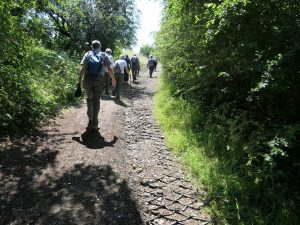 band would have none of this and so we ventured forthwith without a care in the world of either runaway railway engines or panthers, with many among the amiable gang dismissing such tales with a vibrant tish and a heartfelt tush, and indeed so such stories may be said to deserve.
band would have none of this and so we ventured forthwith without a care in the world of either runaway railway engines or panthers, with many among the amiable gang dismissing such tales with a vibrant tish and a heartfelt tush, and indeed so such stories may be said to deserve.
Of course there are always nay-sayers and some suggest that these pictures come from Sausage-on-the-bend, a local village of which it has been said.
But this is not to say that all is peace and tranquility in these rural parts. For here, far from the urban sprawl of city centres, such exploratory ideas can be dismissed as meaningless, or in the local vernacular, “a load of bull”, and where this is the case signs are put up to mark the citation.
Indeed here we can see the commemoration of one such debate held in the local pastures.
 And yet there duly it was – the famous “bull in the china shop” although there was no china to be seen, but this is typical of these ancient legends which always seem to get things wrong.
And yet there duly it was – the famous “bull in the china shop” although there was no china to be seen, but this is typical of these ancient legends which always seem to get things wrong.
Of course it is important not to run away from a bull, and so our solid band of ramblers took due note of this adage and continued to walk at their regular pace, paying neither heed nor regard to the activity of the animal for a moment caught in the brief glare of publicity.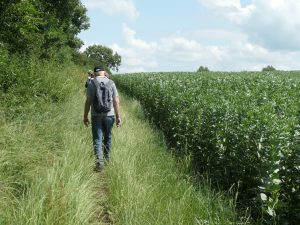
Our backmarker back marked and proceeded forth refusing to be set aside by the snorting and grunts from behind which in fact emanated from a rehearsal of “The Enchanted Pig” by the Melton Mowbray Dramatic Society who were reviewing their parts in the next footpath.